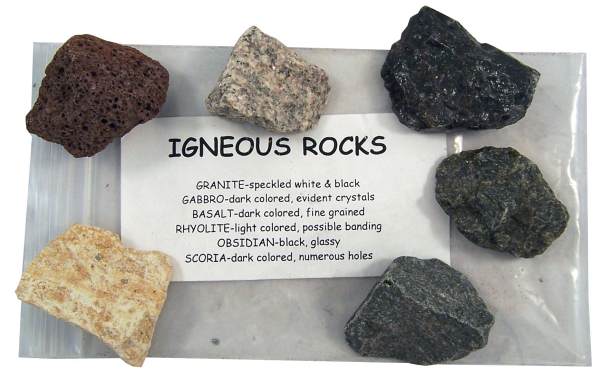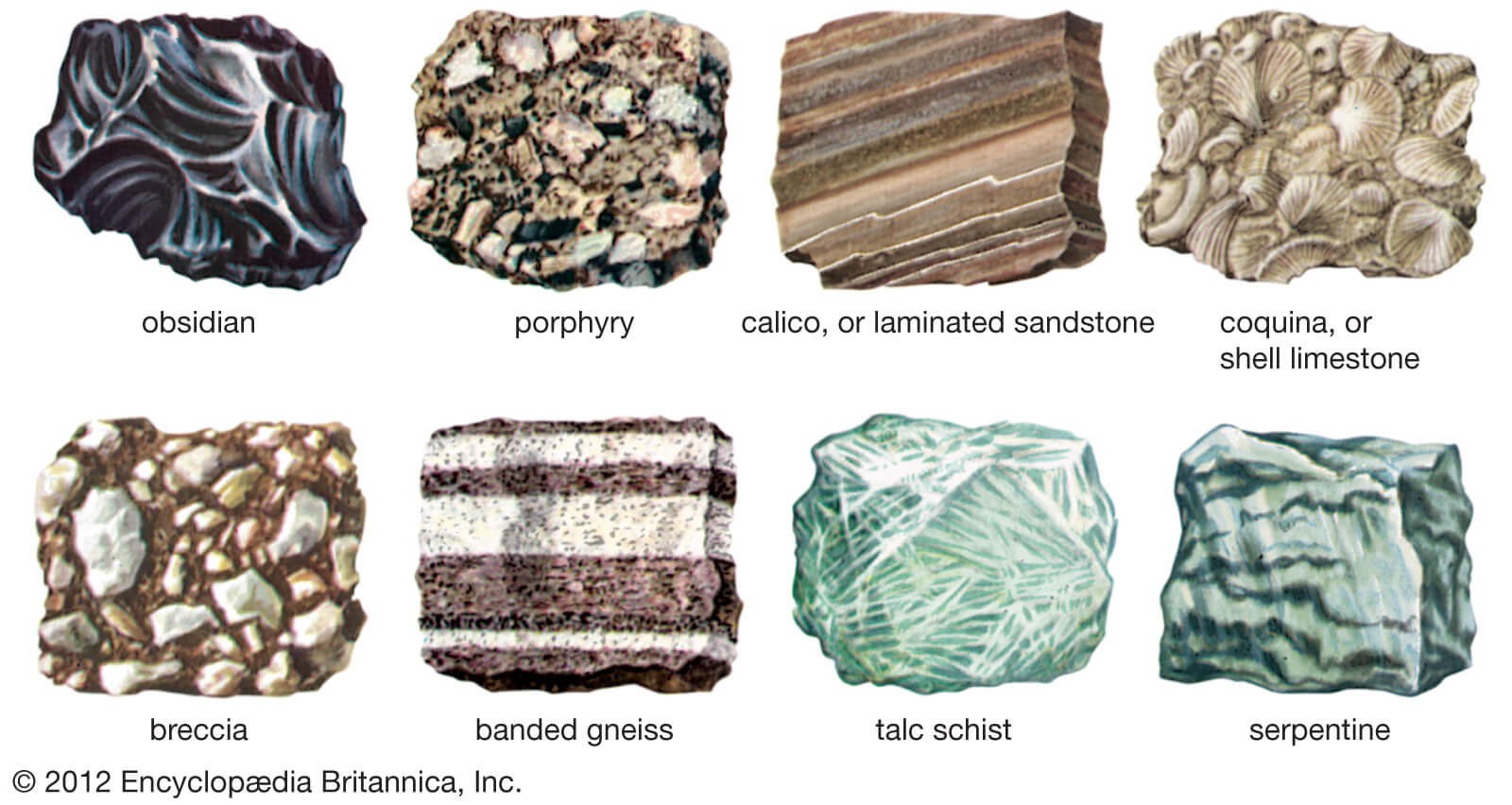Igneous rocks are one of the three main rock types, others being sedimentary and metamorphic. They are formed through the cooling and solidification of magma or lave. They may form with or without crystallization, either below the surface of earth as intrusive(plutonic) rocks or on the surface of earth as extrusive(volcanic) rocks.
Texture of Igneous Rocks
Texture of igneous rocks is the actual relationship between crystals or in between crystal and glassy matter under physiochemical environment. It provide information about how the igneous rock was formed. More particularly, it gives cooling history of magma. The texture of igneous rocks is differentiated on different types, here are some of them:
Texture of igneous rocks based of granularity:
Granularity is defined as the size of grains or crystals. On the basis of granularity, the texture of igneous rocks are of following types:
Phaneritic:
These are the crystals that are clearly visible to the naked eye or pocket lenses. They are of following types:
- Coarse-grained: The texture of igneous rocks is coarse grained if the average crystal diameter is less than 5mm
- Medium-grained: The texture of igneous rocks is said to be medium-grained if when the average crystal diameter is between 1mm to 5mm
- Fine-grained: The texture of igneous rocks is said to be fine grained when the average crystal diameter is less than 1mm
Aphanitic:
Igneous rocks are said to be aphanitic if the crystals cannot be seen with unaided eye. This type of texture is formed as a result of rapid rate of cooling. The crystals are microscopic and may contain vesicles(holes from gas bubbles). They are of following types:
- Microcrystalline: The texture of igneous rocks is said to be microcrystalline if the crystals are clearly distinguishable only under microscope.
- Merocrystalline: Here, the crystal are intermediate in range
- Glassy: They have no crystallization at all. This shows very rapid cooling of lave and the resulting rock is called obsidian.
Texture of igneous rocks based on Fabric
Fabric is the degree of development of crystal faces. Here, it is further divided into two types:
With reference to the development of crystal faces
- Euhedral: Crystal faces are completely bounded by faces
- Subhedral: Crystal faces are partly developed
- Anhedral: Crystal faces are altogetherly absent
With reference to the relative dimension in 3 spaces; direction
- Equidimensional/ equant: Crystals are equally developed in every direction(e.g. polyhedral crystals of garnet, augite, leucite)
- Prismatic: Better developed in 2 spatial direction that the third. They form columns, prisms(thick & thin), rods, needles(e.g. hornblende, apatite)
- Irregular: Crystals are not well developed in any direction. Wisps, shreds, ragged patches, veins, skeletons(e.g. lattice like skeletal crystals of limestone)

Structure of Igneous Rocks
They are dependent on composition and viscosity of magma, temperature and pressure at cooling and presence of gases and other volatiles. The igneous structures are mainly formed in the flow stage of magma i.e. in extrusive rocks. Following are the different structures of igneous rocks:
- Vesicular and amygdaloidal structures: Near the top of the flows, empty cavities of variable dimensions are formed due to lavas with gases and other volatiles. The individual cavity is called the vesicles and as a whole resulted structure is called the vesicular structure. The empty cavities filled by secondary minerals are called the amygdales. The lavas with amygdales are said to have an amygdaloidal structure.
- Lava Drain Tunnels: It is a hollow structure developed due to the brain out of interior fluid lava.
- Blocky Lava: A very rough surface developed during lave flows due to their high viscosity. They are also known as ‘aa structure.
- Ropy Lava: A very smooth surface developed during basic lava flows due to their low viscosity. They are also known as the ‘Pahoehoe’ structures.
- Pillow Structure: It consists of isolated pillow-shaped masses piled one upon another.
- Sheet Structure: The horizontal slices developed on the massive igneous rock due to one set of well-defined jointing is called the sheet structure of igneous rocks.
- Platy Structure: The plate-like structure developed in rocks due to the development of different sets of joints.
- Columnar Structure: The formation of columns due to the development of vertical sets of joints through contraction of lava.
- Flow Structure: The lavas and crystallized particles are arranged parallel to the direction of flow of the lava.
- Rift and grain: The equally spaced joints are producing cubical blocks. These joints are known as rift and grain.


[…] Texture and structure of igneous rocks […]